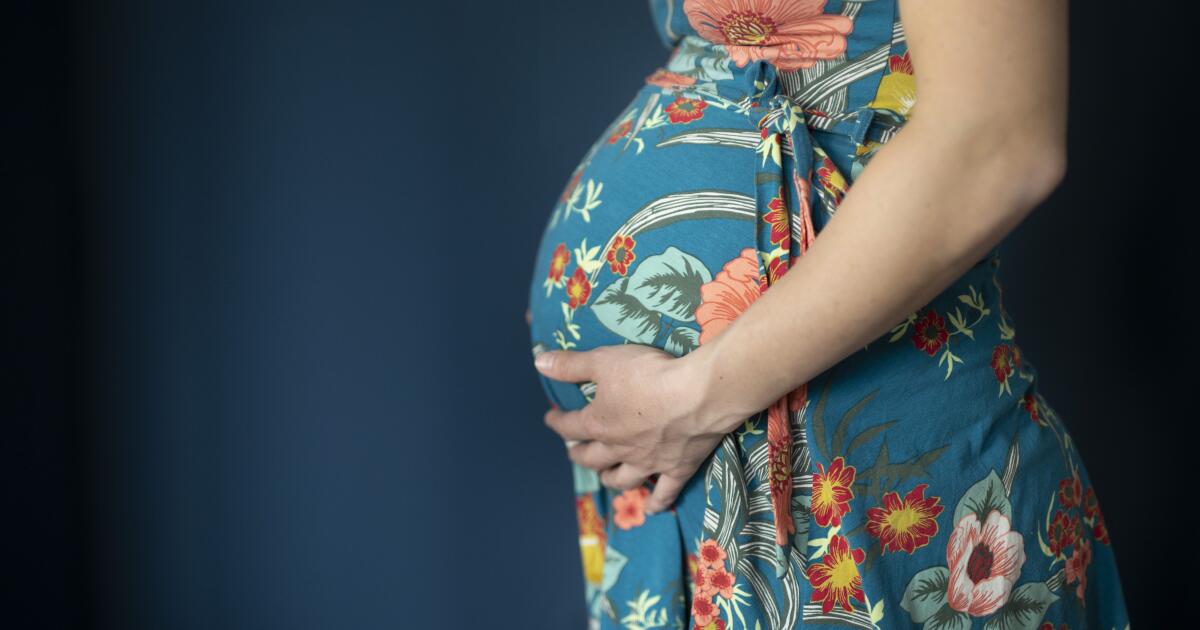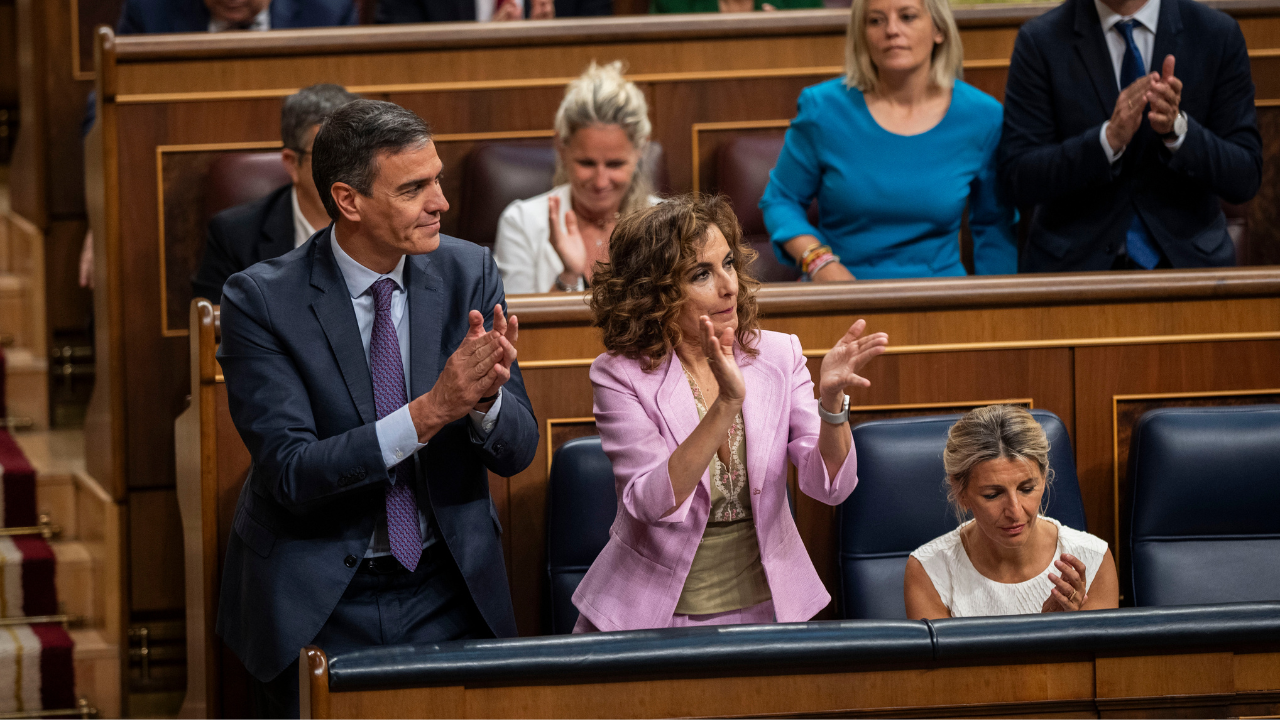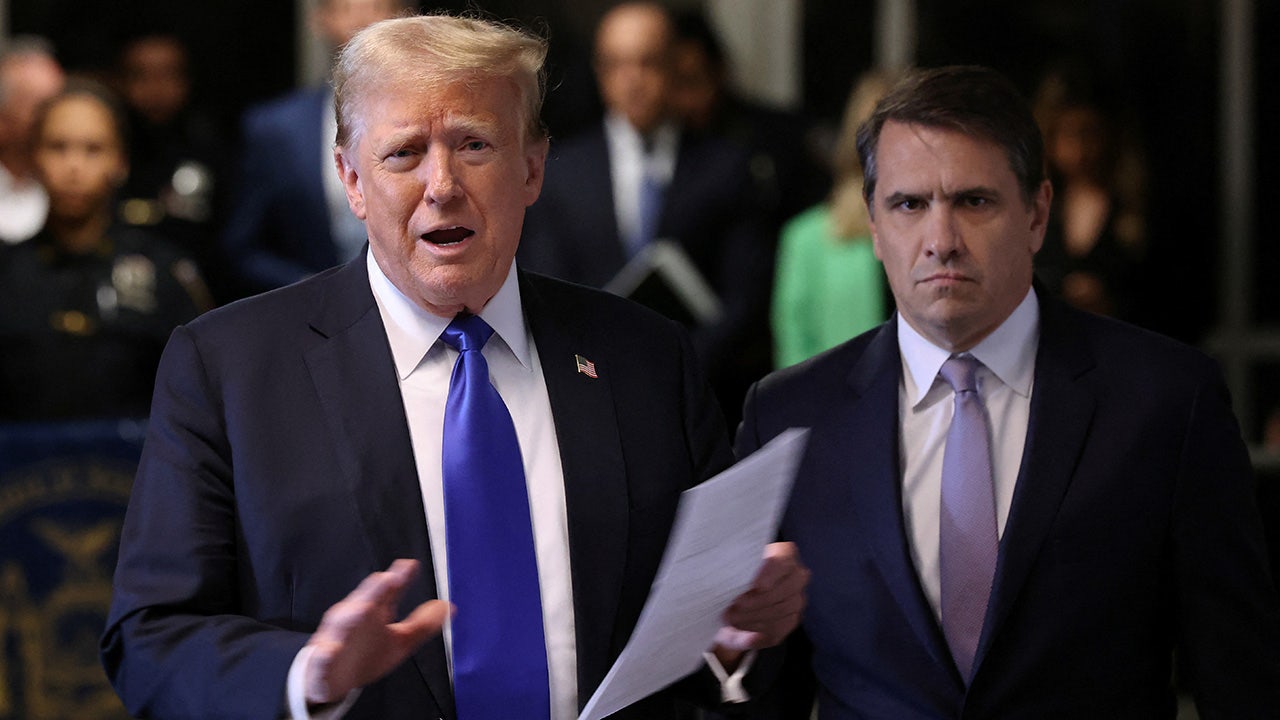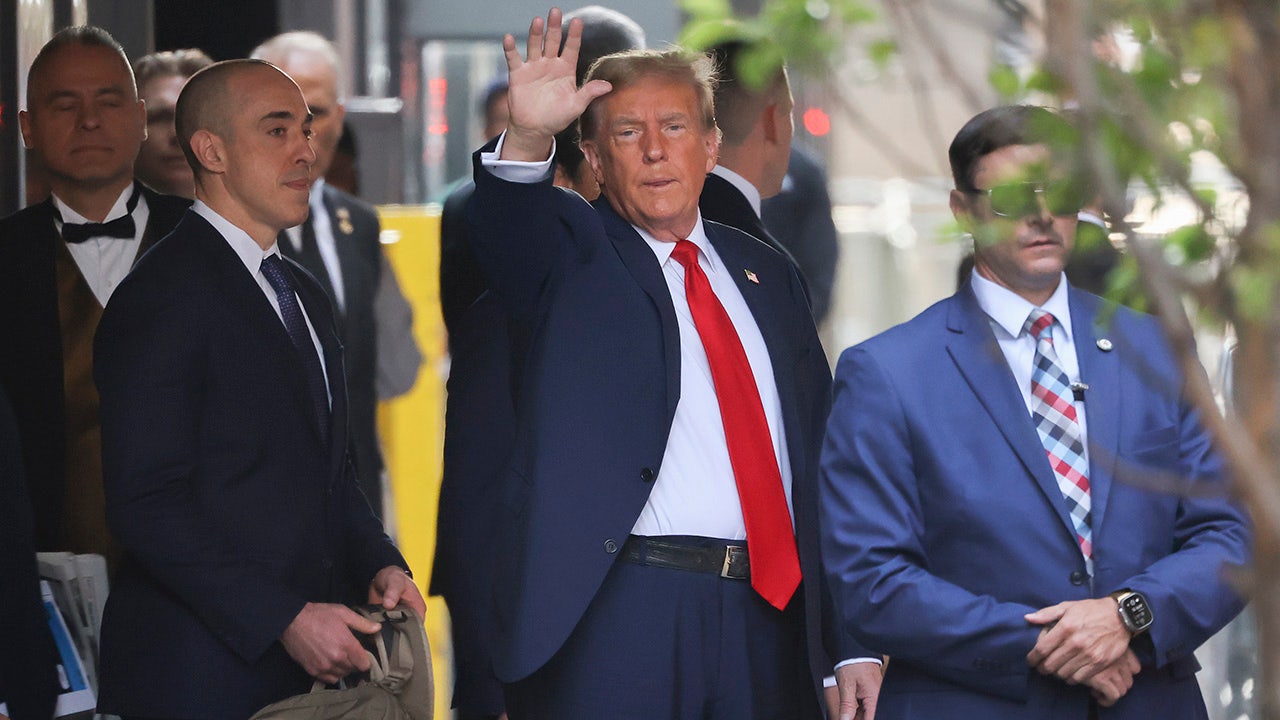Education
Students Are Making a ‘Surprising’ Rebound From Pandemic Closures. But Some May Never Catch Up.

Elementary and middle-school students have made up significant ground since pandemic school closings in 2020 — but they are nowhere close to being fully caught up, according to the first detailed national study of how much U.S. students are recovering.
Overall in math, a subject where learning loss has been greatest, students have made up about a third of what they lost. In reading, they have made up a quarter, according to the new analysis of standardized test score data led by researchers at Stanford and Harvard.
The findings suggest that the United States has averted a dire outcome — stagnating at pandemic lows — but that many students are not on pace to catch up before the expiration of a $122 billion federal aid package in September. That money — the single largest federal investment in public education in the country’s history — has paid for extra help, like tutoring and summer school, at schools nationwide.
Even with the federal funds, the gains were larger than researchers expected, based on prior research on extra money for schools. Recovery was not a given, judging from past unexpected school closures, like for natural disasters or teachers’ strikes.
Still, the gap between students from rich and poor communities — already huge before the pandemic — has widened.
“One of the big and surprising findings is there actually has been a substantial recovery,” said Sean F. Reardon, a professor of poverty and inequality in education at Stanford, who conducted the new analysis with Thomas J. Kane, an economist at Harvard; Erin Fahle, executive director of the Educational Opportunity Project at Stanford; and Douglas O. Staiger, an economist at Dartmouth.
“But it’s an unevenly felt recovery,” Professor Reardon said, “so the worry there is that means inequality is getting baked in.”
Some children may never catch up and could enter adulthood without the full set of skills they need to succeed in the work force and life.
The students most at risk are those in poor districts, whose test scores fell further during the pandemic. Though the new data shows that they have begun to catch up, they had much more to make up than their peers from higher-income families, who are already closer to a recovery.
The result: Students in poor communities are at a greater disadvantage today than they were five years ago.
Yet there is significant variation. Some wealthy districts have barely improved. Some poorer districts have made remarkable recoveries, offering lessons for what has worked. In places like Durham, N.C.; Birmingham, Ala.; and Delano, Calif., students are now about fully caught up.
The data does not include any progress students may be making this school year, which will be measured in state tests this spring.
But the study suggests that many students will still need significant support, just as federal aid is running out.
“We seemed to have lost the urgency in this crisis,” said Karyn Lewis, who has studied pandemic learning declines for NWEA, a research and student assessment group. “It is problematic for the average kid. It is catastrophic for the kids who were hardest hit.”
Why Inequality Has Widened
The analysis looked at test score data for third- through eighth-grade students in 30 states — representing about 60 percent of the U.S. public school population in those grades. It examined pandemic declines from 2019 to 2022, and measured recovery as of spring 2023. It offers the first national comparison of recovery at a school district level. (It did not include high school students.)
Test scores fell most in poor districts. School closures, though not the only driver of pandemic losses, were a major factor: Schools in poor communities stayed remote for longer in the 2020-21 school year, and students suffered bigger declines when they did.
But once schools reopened, the pace of recovery was similar across districts, the analysis shows. Both the richest and poorest districts managed to teach more than in a usual school year — about 17 percent more in math, and 8 percent more in reading — as schools raced to help students recover.
Yet because poor districts had lost more ground, their progress was not nearly enough to outpace wealthier districts, widening the gulf between them. The typical rich district is about a fifth of a grade level behind where it was in 2019. The typical poor district: nearly half a grade.
Another factor is widened inequality within districts.
When looking at data available in 15 states, researchers found that in a given district — poor or rich — children across backgrounds lost similar ground, but students from richer families recovered faster.
One possible explanation: Even within districts, individual schools have become increasingly segregated by income and race in recent years, said Ann Owens, a sociologist at the University of Southern California. When this happens, she has found, achievement gaps grow, largely because students from wealthier families benefit from a concentration of resources.
Schools made up mostly of high-income families attract more experienced teachers. High-earning parents are more likely to invest in tutors or enrichment outside of school.
Even when schools offered interventions to help students catch up, lower-income families might have been less able to rearrange schedules or transportation to ensure their children attended. (This is one reason experts advise scheduling tutoring during the school day, not after.)
Racial gaps in student scores have also grown, with white students pulling further ahead.
Black students, on average, are now recovering at a faster pace than white or Hispanic students, the analysis suggests — but because they lost more ground than white students, they remain further behind. The gap between white and Hispanic students has also grown, and Hispanic students appear to have had a relatively weak recovery overall. The analysis did not include Asian students, who represent 5 percent of public school students.
Where Students Are and Are Not Recovering
Another factor in recovery: where students live.
Take Massachusetts, which has some of the nation’s best math and reading scores, but wide inequality. The recovery there was led by wealthier districts. Test scores for students in poor districts have shown little improvement, and in some cases, kept falling, leaving Massachusetts with one of the largest increases in the achievement gap. (Officials in Massachusetts hope that an increase in state funding for K-12 schools last year, as part of a plan to direct more money to poor districts, will help close gaps.)
In states like Kentucky and Tennessee that have traditionally had more middling test scores, but with less inequality, poor students have recovered remarkably well.
In just one of the states included in the analysis, Oregon, test scores in both math and reading have continued to decline.
Oregon officials pointed to investments they hope will show results in the future, including permanent funding for early literacy. “We are definitely not satisfied with where we are,” said Charlene Williams, director of the Oregon Department of Education. She added, “We need every minute of instruction we can get.”
Across the country, richer districts overall saw gains. But some have made little to no recovery, including Forsyth County on the outskirts of Atlanta; Rochester, Mich., in suburban Detroit; and Lake Oswego, Ore., near Portland.
And some poorer districts did better than expected, including large urban districts like Chicago, Nashville and Philadelphia, which saw big drops during the pandemic, but have had above-average recoveries.
In the years before the pandemic, big-city school districts often outpaced the nation in learning gains, even as they served larger shares of poor students and more students learning English as a second language.
“We have had to be more innovative,” said Raymond Hart, executive director for the Council of the Great City Schools, which represents 78 large urban school districts.
Bright Spots: What Has Worked?
Birmingham, Ala., prioritized extra time for learning over school breaks. Mark Sullivan, the superintendent, said some parents initially balked, but have come to love the program.
Bob Miller for The New York Times
When it comes to success, no one strategy appeared to lead the way.
In interviews in a sample of districts with outsize recovery, educators described multiple approaches. Some focused on spending more federal dollars on academics — and less, for instance, on renovating school buildings. Some prioritized adding instruction time — via intensive tutoring, summer school or other sessions — which research shows can produce significant gains. Many experimented, coming up with new strategies to help students, including their mental health.
“I stopped looking for these silver bullets,” said Alberto M. Carvalho, the superintendent in Los Angeles, which has seen above-average recovery compared with the rest of California, including strong recoveries for Black and Hispanic children. “More often than not, it is the compound effect of good strategies.”
The $122 billion federal aid package has helped fund this effort, especially in poor communities. The poorest districts received about $6,200 per student in aid, compared with $1,350 for the most affluent districts.
But the law required only 20 percent of the money be spent on learning loss, with no mandate to invest in the most effective strategies and little national accounting of how the money was spent. That has made it hard to evaluate the impact of federal dollars nationally.
One strategy some districts used was spending much more than 20 percent of their funds on academic recovery.
For example, Weakley County, Tenn., a lower-income and mostly white rural district, allocated more than three-fourths. (Tennessee gave districts incentives to spend at least half of their federal dollars on academics.) Today, Weakley County’s math and reading scores are fully recovered.
Its main focus was a tutoring program — students who are behind meet with experienced tutors in groups of three, twice a week. The district also hired instructional coaches, social workers and educational assistants who teach small groups in classrooms. “If you ask a teacher and say, ‘In a perfect world, if I have $30,000, what would you like me to buy?’ every teacher would say, ‘Another person in this classroom to help,’” said Betsi Foster, assistant director of schools.
Other districts focused on adding more hours of school, including Birmingham, Ala., a majority Black district where most students qualify for free or reduced price lunch.
The superintendent, Mark Sullivan, said he first wanted to make school year-round, a dramatic solution that found little support among families and teachers. So he offered a compromise: The district would hold extra instructional sessions available to all students during fall, winter and spring breaks, in addition to summer school.
Mr. Sullivan said some parents initially balked, but have come to love the program, in part because it provides child care during school breaks. More than a quarter of students typically participate.
Combined with other tactics, like hiring local college students as tutors, Birmingham made up for its pandemic losses in math.
The pandemic also spurred educators to innovate.
Among other strategies, Durham, N.C., a racially and economically diverse district that is now fully recovered, asked its most effective teachers to teach summer school and paid $40 an hour, up from the usual $25 rate.
It is one example of setting high expectations, which the superintendent, Pascal Mubenga, said was integral to recovery. “We did not just give that opportunity to any person; we recruited the best,” he said.
In the Delano Union school district, which serves mostly poor Hispanic students in central California, employees began making daily visits to the homes of students who were frequently absent — a ballooning national problem since the pandemic. The district’s absenteeism rate has fallen under 10 percent, from 29 percent.
The district focused on student well-being as a prerequisite for academics. For example, teachers now ask students to write down how they are feeling each week, a simple and free strategy that has helped uncover obstacles to learning — a fight with a friend, money problems at home.
“If a child is not mentally OK, no matter how good my lesson is, my students will not learn,” said Maria Ceja, who teaches fourth grade.
Students in Maria Ceja’s fourth-grade class in Delano, Calif., with Rosalina Rivera, the superintendent. Since the pandemic, teachers have begun using hands-on tools during math lessons, a strategy they said is helping children after online learning.
Adam Perez for The New York Times
What Now?
Despite the successes, the pace of national recovery has been “too little,” said Margaret Spellings, a former secretary of education under George W. Bush. “We’re slowly recovering, but not fast enough.”
Congress has shown little appetite to add more funding, and many districts will soon end or cut back programs.
In a statement on Wednesday, the Biden administration did not push for more federal dollars, and instead renewed its call for states to take a greater role, both in financing programs and tracking the number of students receiving intensive tutoring or summer school.
Professor Kane, one of the researchers, advised schools to notify the parents of all children who are behind, in time to sign up for summer school. Despite setbacks on standardized tests, report card grades have remained stable, and polling indicates most parents believe their children are on track.
And what if students never catch up?
While test scores are just one measure, lower achievement in eighth grade has real impact in adulthood. It is associated with lower lifetime earnings, as well as a higher risk of unemployment and incarceration, research has shown.
At this rate, the United States will have a less skilled work force in the future, leading to lower economic output, said Eric Hanushek, an education economist at the Hoover Institution.
The highest-achieving students are likely to be least affected, said Marguerite Roza, director of the Edunomics Lab at Georgetown University — perhaps fewer will study advanced math and science and enter rigorous professions like engineering.
Students in the vast middle — some who may otherwise have become nurses or electricians, for example — could lose opportunities to establish middle-class lives. Community college enrollment is down from 2019.
And the lowest-achieving students may further disengage from school, making it harder to graduate from high school and hold down even low-wage jobs.
As the pandemic generation enters adulthood, they may face a lifetime of lost opportunities.

Education
Video: ‘It Didn’t Have to Happen This Way:’ U.Va. Faculty Call for Review of Police Response to Protests

Protesters: “Disclose! Divest!” In student-led protests around the country, university faculty have stood in support of demonstrators, risking arrest. “He is a professor. He is a professor.” At the University of Virginia, The Times got an inside look at faculty’s role. “I can take you through the blow by blow of the day if you want.” And how their negotiations with police broke down at a crucial moment. “Why is he —” “Back up.” “In a wanton fashion, they allowed the Virginia State Police to come here fully armed, rifles, mace. One of my colleagues was standing right there trying to talk to the Virginia State Police. He got arrested. The other one standing next to him got pushed back behind the line, and he got partially maced. It didn’t have to happen this way.” The night before police raided a pro-Palestinian encampment, a few University of Virginia professors tried to deescalate the standoff and recorded their conversation with the university police chief, Tim Longo. The Times agreed to blur the faces of faculty who had concerns about their job security. Protesters had refused to engage with the university. So a handful of professors stepped in to be intermediaries. This, at times, frustrated administrators who told The Times the process required a leap of faith. “We basically took shifts, two-hour shifts being here. We had these yellow armbands that we wore to distinguish that we were faculty liaison. And our job really was just to communicate between the administration, the police and the students.” Hours later, Professors Walter Heinecke and Mark Sicoli, who documented the incident on his phone, approached the police chief again, stating confusion about what the campus policy actually states for use of smaller recreational tents. Within half an hour, before professors and police could come to an agreement about the tent policy, Chief Longo called the Virginia State Police. Troopers soon arrived with pepper spray and M4 assault rifles to help dismantle the encampment. In all, a few dozen protesters in about 20 tents. “Shame on you. Shame on you.” University officials say they warned protesters for days that they were in violation of school policy. Twenty-seven people were arrested, including at least one professor, who declined to speak with us for this story. “He is a professor. This is a professor.” “We were in front of the camp students. And then in front of us were faculty. And then the Virginia State Police were here and moved in. I was hit with a riot shield, which is when I got this bruise. They pepper-sprayed me. I was detained for about 10 minutes, if I had to guess. And then eventually, they just, like, cut off my zip ties.” The heavy police response raised alarm across campus. And now, several faculty members, including Heinecke, want to hold the university accountable for what they say was a violent clampdown on free speech, protesting Israel’s war in Gaza. “I’ve just got to show you one thing where they get around on —” “If they would have just said, you know, let’s negotiate, let’s leave the tents up for a couple more days and we’ll negotiate this out. It’s not like you’re robbing a bank or anything. You put a couple of tents on. Why couldn’t we have just done this a different way because the stakes were so low?” The university president and campus police chief did not respond to requests for comment. “And then I’ll turn to Chief Longo.” But in a virtual town hall on May 7, university police and administration defended their actions, citing unidentified outside agitators as a primary concern. “The police were met with physical confrontation and attempted assault, and didn’t feel equipped to engage given the situation. That’s when the decision was made to call on the state police.” “We have a duty to fight for Palestine.” “We have a —” “I was afraid that myself and the assistant chief would be surrounded, and that we would be put in a position to have to defend ourselves. It was clear to me by word and action, this was escalating.” “Free, free Palestine.” “In front of the historic rotunda.” In response, Heinecke and several other faculty members held their own town hall to try to show that the police action was unwarranted. Then on May 10, the U.V.A. faculty senate held a hearing with President Ryan to discuss the university response to protests. “I, for one, am thankful for him that he prevented us to get into a situation, which would be similar to a Columbia.” While there was support, most of the speakers were critical. “My heart broke because of what took place.” “To the condemnable call of the Virginia State Police in full gear, and the use of excessive force to terrorize our students in their own backyard.” “If all of you decide I’m not the right leader, that’s your choice.” In a vote, faculty called for an independent review of his and Chief Longo’s decisions on May 4, but stopped short of condemning the police action outright. “All right. Once again, I need people who are just here for court.” On the same day across town, supporters of protesters facing trespassing charges gathered in solidarity at the courthouse. “It’s first hearing for everybody who was charged with trespass, which includes our two students.” On May 15, many of those arrested at the protest encampment had their charges dismissed by the public prosecutor. A U.V.A. spokesman told The Times that the university has not yet agreed to an independent review of its decision to call in state police.
Education
Video: Hundreds of Harvard Students Walk Out at Commencement

new video loaded: Hundreds of Harvard Students Walk Out at Commencement
transcript
transcript
Hundreds of Harvard Students Walk Out at Commencement
The students were protesting Harvard University’s decision to bar 13 seniors from the ceremony in the wake of campus demonstrations over the war in Gaza.
-
Crowd: “Let them walk. Let them walk, let them walk.”
Recent episodes in Israel-Hamas War
Education
Video: Protesters Scuffle With Police During Pomona College Commencement

new video loaded: Protesters Scuffle With Police During Pomona College Commencement
transcript
transcript
Protesters Scuffle With Police During Pomona College Commencement
Pro-Palestinian demonstrators tried to block access to Pomona College’s graduation ceremony on Sunday.
-
[chanting in call and response] Not another nickel, not another dime. No more money for Israel’s crime. Resistance is justified when people are occupied.
Recent episodes in U.S.
-

 Culture1 week ago
Culture1 week agoFrom Dairy Daddies to Trash Pandas: How branding creates fans for lower-league baseball teams
-

 News1 week ago
News1 week agoRed Lobster files for bankruptcy after missteps including all-you-can-eat shrimp
-

 News1 week ago
News1 week agoThe states where abortion is on the ballot in November : Consider This from NPR
-

 Politics1 week ago
Politics1 week agoMichael Cohen swore he had nothing derogatory on Trump, his ex-lawyer says – another lie – as testimony ends
-

 Politics1 week ago
Politics1 week agoAnti-Israel agitators interrupt Blinken Senate testimony, hauled out by Capitol police
-
News1 week ago
Trump's social media account shares a campaign video with a headline about a 'unified Reich'
-

 News1 week ago
News1 week agoRead Prosecutors’ Filing on Mar-a-Lago Evidence in Trump Documents Case
-

 Science1 week ago
Science1 week agoPregnant? Researchers want you to know something about fluoride


/cdn.vox-cdn.com/uploads/chorus_asset/file/23986616/acastro_STK097_02.jpg)










